3 Cost-Saving Solutions for Life Safety Requirements
The post-pandemic economic recovery has taught us all the value of the supply chain. Construction costs especially have been impacted considering how many supply chains terminate at a job site to complete a given project. As a result, cost-saving measures that could mean the difference between a project surviving or dying are paramount to offset the increases. Nevertheless, there are many ways to save costs that do not require building quality or scale to be sacrificed. For our purposes here, we will focus on life safety strategies you may not have considered as a way to keep occupants safe and meet the requirements of the building code while saving significant costs as compared to other methods.
1. Eliminating or Significantly Reducing the Size of Smoke Evacuation Systems In Atriums
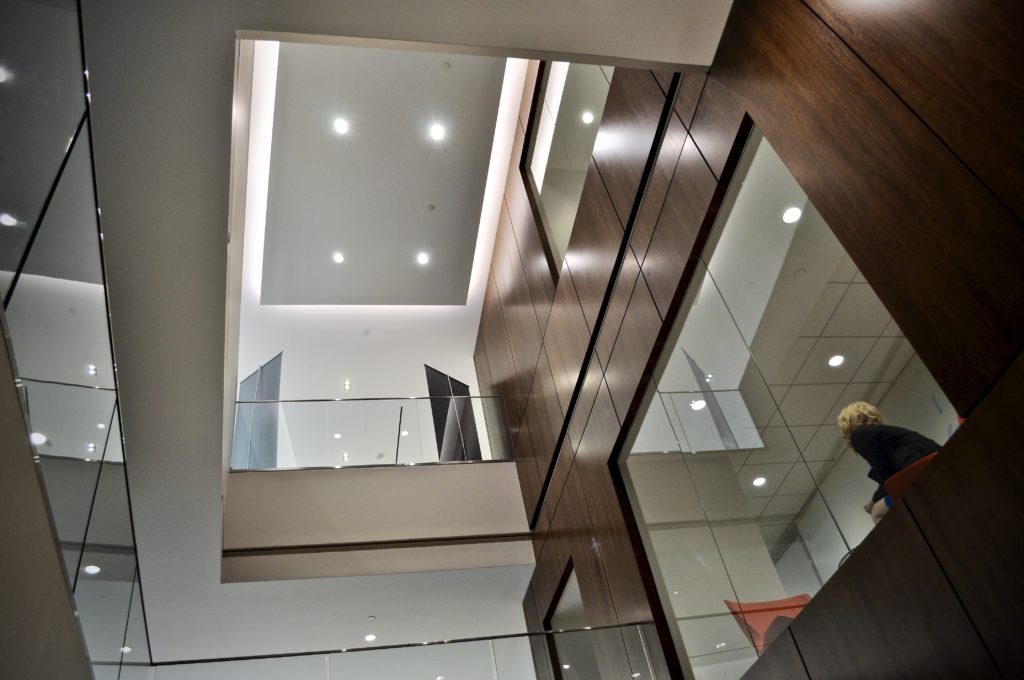
Vertically connected spaces in the building code have different requirements depending on the type. Atriums, for example, must be separated from adjacent spaces by 1-hour fire barrier construction, glass block walls, or glass washed with sprinklers (404.6). When the atrium connects more than 2 floors, an engineered smoke control system is to be provided (404.5)
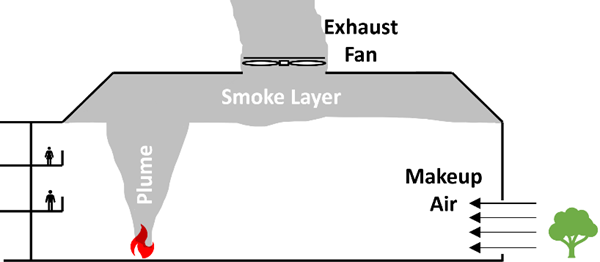
The engineered smoke control system can be strategically designed to effectively contain and eliminate smoke while controlling costs. The most expensive element is always the smoke evacuation system, which means efforts to reduce the size or eliminate the units together will significantly help the cost control effort.
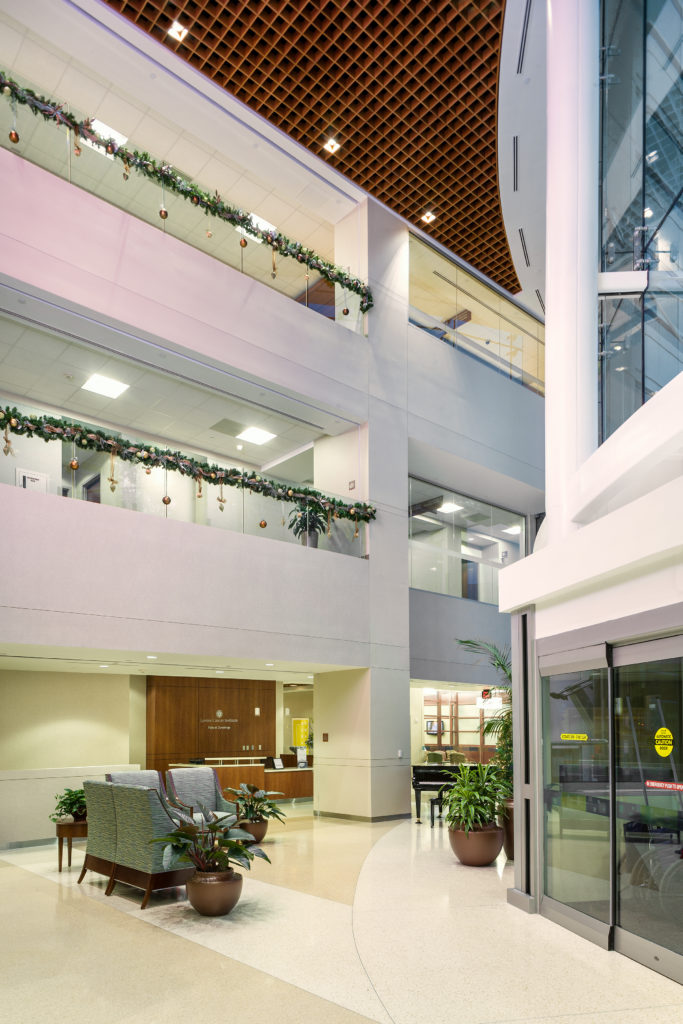
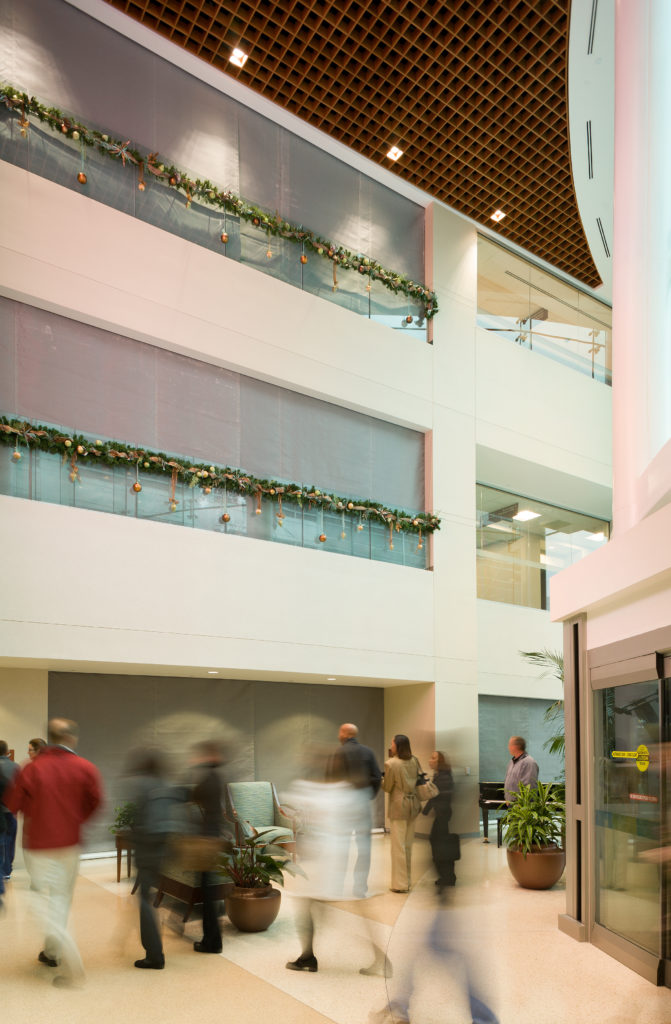
Opening protectives like vertically acting fabric fire curtains can effectively close off balconies and surrounding square footage to reduce the amount of air volume the evacuation system is required to pull out of the atrium. In this example from Atrium Health’s Levine Cancer Institute in Charlotte, the Smoke Evacuation System was roughly half the size it was originally designed to be after utilizing the smoke-rated curtains.

One important note about fabric curtains and their corresponding ratings and locations of use: the International Building Code in a previous version (2018 and older) did not have a prescribed location to use a product tested to the UL-10D test procedure (due to it being a new test procedure), and instead listed locations for UL-10B rated opening protectives only. The 2021 version of the IBC will describe where UL-10D products can be used and for what duration of protection (20 minutes only). Consequently, UL-10D rated smoke curtains cannot replace the 1-hour fire barrier construction mentioned in section 404.6, but are supplemental protectives against smoke only inside the fire barrier. Curtains and fire doors that passed UL-10B however are able to serve as an opening protective in the fire barrier itself.
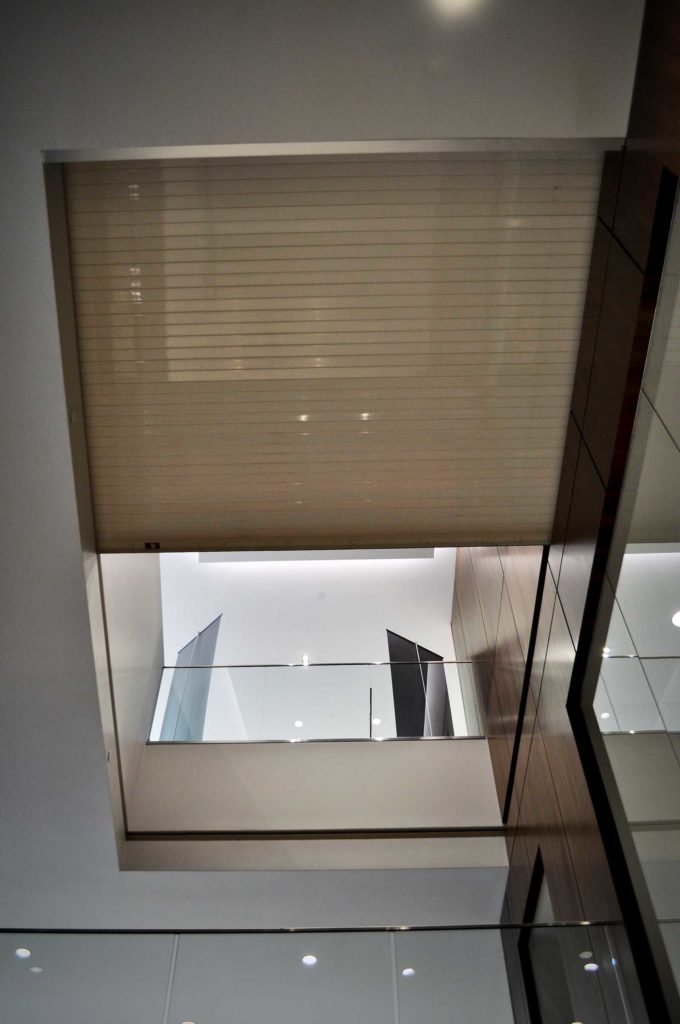
In a bit of a different strategic direction, those interconnected vertical spaces that net three or more vertically connected spaces. and the surrounding fire barrier creates a shaft enclosure via one big compartment, as described in the International Building Code section 712 and 713 (708.2 in older versions of the IBC). The Smoke Evacuation system as we mentioned before, eliminates the smoke from the compartment to allow safe egress from the building without flooding the upper floors with smoke.
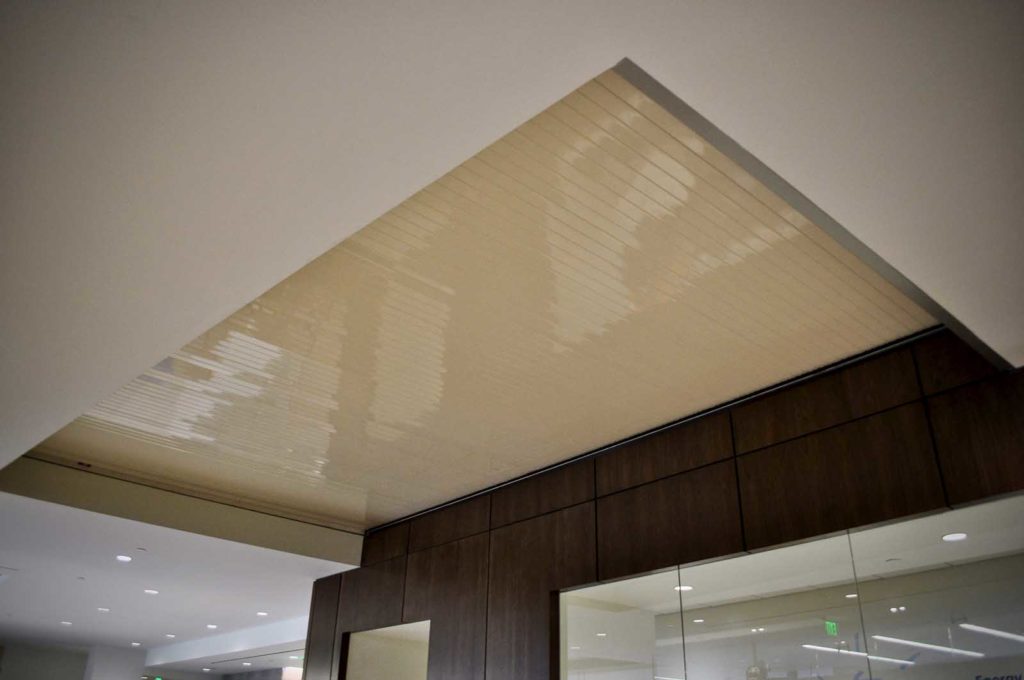
Since the vertical walls of the shaft are 1-hour fire barriers, to protect the rest of the building from a fire in the shaft, separating that large compartment into smaller compartments to the extent that there are only two vertically connected floors, the atrium now does not require an engineered smoke control system at all since three or more connected floors is what activated the requirement.
This would represent significant cost savings on the project as a whole and if feasible, is the strategy pictured from our installation at Metlife’s Charlotte Headquarters in the Ballantyne Corporate Park using McKeon Door Company’s model H200 Horizontal Fire Door.
Lastly, since the horizontal plane is part of the compartment as described above, it will require opening protectives approved by the International Building Code to be installed on a 1 hour Fire Barrier; the Horizontal Fire Door must be UL-10B rated.
2. Reducing Construction Type by Using More Fire Walls

Fire Walls, as defined in the International Building Code as “a fire-resistance-rated wall having protected openings, which restricts the spread of fire and extends continuously from the foundation to or through the roof, with sufficient structural stability under fire conditions to allow collapse of construction on either side without collapse of the wall”(Section 202). Effectively, firewalls divide up a building into parts, and the two separated parts are treated by the building code as independent structures (503.1). As a result, these two separate buildings have independent requirements. Building Construction types per the International Building Code have specific allowable square footages that line up with their occupancy and use (reference Tabe 506.2 in the IBC 2018 and 2015). Design often runs into the dilemma of increasing building type requirements to allow for larger square footage allowance to preserve an open free-flowing space, due to perceived limitations firewalls create. The division the firewall creates often falls in paths of egress, or spans a large distance of interior space that was intended to be open.
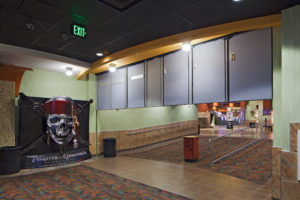
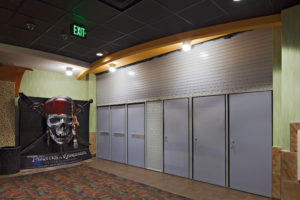
As a result, a design team may utilize a more expensive construction type to keep the design open (section 602 and 603 explains the construction types and materials used). What cost savings could be created if large square footage designed to a type II construction could be reduced to a type III or type IV lighter construction due to separated portions being ultimately reduced square footage in the eyes of the code? Wide-span opening protectives can really help here: McKeon Door has developed solutions just for this purpose. Products like the one pictured above are able to be rated up to 3 hours (the rating required for opening protectives per table 716.1) with large width capacities, AND the ability to add ADA-compliant egress doors.
3. Eliminating Elevator Lobbies
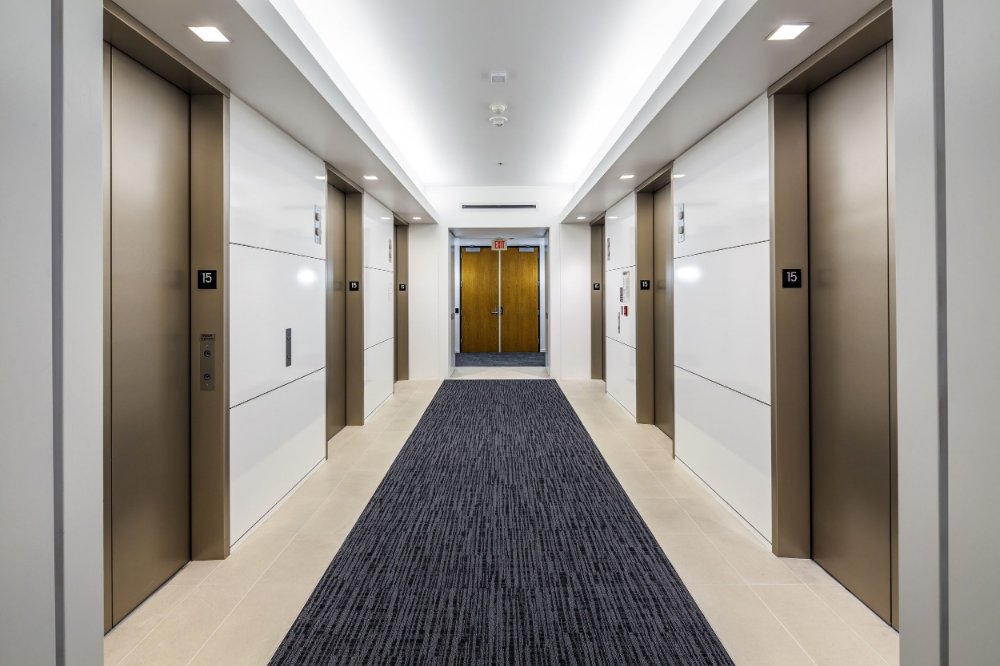
Another area of life safety design we have mentioned in the past is the elevator lobby. The building code requires protection of the elevator shaft as it extends vertically throughout the building; lobbies are a common method of achieving this (3006.3). However, they are not the most efficient way to lay out the floor plan. In addition, they represent added material costs to provide ceilings, wall finishes, furniture, flooring, and artwork, among other cost items that are required. Opening the elevator directly onto corridors, office interiors, or even apartment rooms would be a more efficient layout of an elevator opening location.
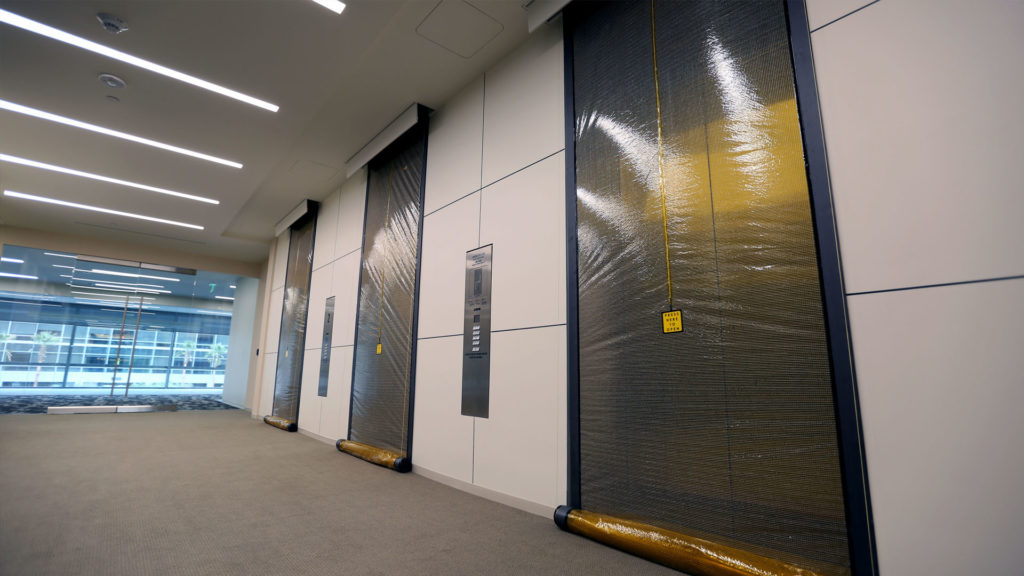
From a usage standpoint, the lobbies take up valuable square footage. Building owners leasing out spaces are giving up income-generating square footage, hotels and apartments could add another room or additional billable square footage, and tenants typically are paying for the space as an amenity while using it for no more than a walk-through area. Our Smoke Guard elevator opening protectives allow you to eliminate the lobby, and open the elevators directly into the office floor while protecting the elevator openings per the requirements of the building code (3006.3.3 additional doors tested to UL1784 and compliant with section 716.2.2.1.1). Consider the construction savings, income opportunities, and efficiency eliminating elevator lobbies represents!
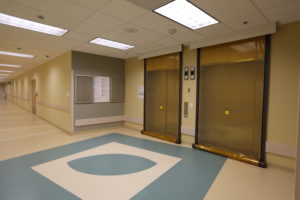
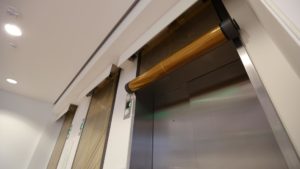
Design Creativity Through New Options
The cost-saving measures explored here are intended to give you additional options you may not have considered when planning the life safety elements and strategies to meet the building code. We at Maxson are always willing to walk through these options further with you – there is, even more, we do not have space to cover here! Please do not hesitate to reach out for assistance with our code-compliant solutions!
Back to Latest News

